Ulmus americana (American Elm)
Michael's Opinion
Once a common tree in the landscape it has succumbed to Dutch Elm Disease spread by the Elm Bark Beetle. Trees now observed are often infected with the disease and as a result are often short-lived. There are a few resistant trees in the province. With their weeping high-branched canopy they are quite majestic and can reach up to 20 m in height.
Botanical Information
| Family | Ulmaceae |
| Genus | Ulmus |
| Species | americana |
| Category | Woody |
| Type | Tree (deciduous) |
| Origin | The American elm in years past before the Dutch elm disease, was a very common tree to find in North America, especially Eastern North America. It was used extensively as a landscape tree until the Dutch Elm disease came to Canada during World War 2. |
| Pronunciation |
Details
| USDA Hardiness Zone | 3 - 9 |
| USDA Hardiness Ref. | |
| Canadian Hardiness Zone | 1a |
| Canada Hardiness Ref. | |
| RHS Hardiness Zone | H7 - H3 |
| RHS Hardiness Ref. | |
| Temperature (°C) | (-37) - (-1) |
| Temperature (°F) | (-35) - 30 |
| Height | 24-30 m |
| Spread | 18-36 m |
| Growth | Medium |
| Flowering Period | May |
Description and Growing Information
| General Description | A very tall, hardy, fast-growing tree. A common landscape plant until Dutch Elm disease killed many trees. A very beautiful, symmetrical tree with strong wood. |
| ID Characteristic | A fast growing vase shaped, symmetrical deciduous tree with arching branches. Has simple leaves and flowers around May. |
| Shape | Symmetrical crown with a vase-like shape. |
| Landscape | American Elm trees add beauty and value to our property. The American Elm was used as a shade tree in years past. |
| Propagation | Seed. |
| Cultivation | The American Elm likes direct sunlight with rich soil and a pH of about 6-7, lots of moisture, and good drainage. |
| Pests | Wetwood, cankers, Dutch Elm disease, powdery mildew and leaf spot. |
| Notable Specimens | Most notable American Elms have died as a result of Dutch Elm disease. |
| Habitat | Eastern North America, but can grow as far as Nova Scotia to British Columbia. |
| Bark/Stem Description | Dark grey scale like bark with deep broad ridges. |
| Flower/Leaf Bud Description | The American Elm has slightly flattened buds that are 6 mm long. They are smooth and shinny with a reddish-brown colour. |
| Leaf Description | Leaves are simple ovate-oblong and are 3-7 cm wide. It has an unequal base and is doubly serrate. |
| Flower Description | Perfect flowers that are greenish red, they aren’t very noticeable and are less then 10 cm long. |
| Fruit Description | The fruit is a 1.5 cm long samara, rounded and notched. They have a reddish tinge and are hairy. |
| Colour Description | Dark green leaf in the summer and yellow in the autumn. Has dark grey bark. |
| Texture Description | Has a rough textured bark and leaf. |
Photographs
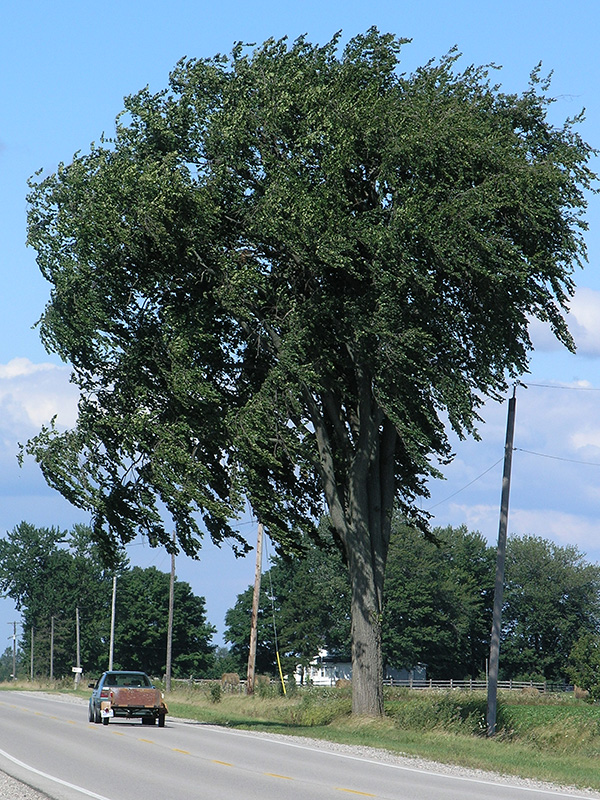
A magnificent specimen on highway 2 south east of Melbourne, Ontario.
.jpg)
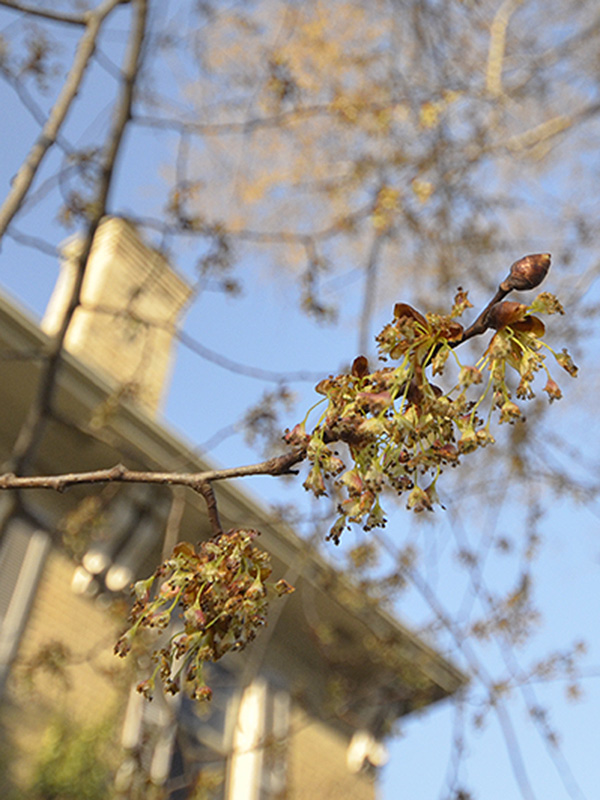
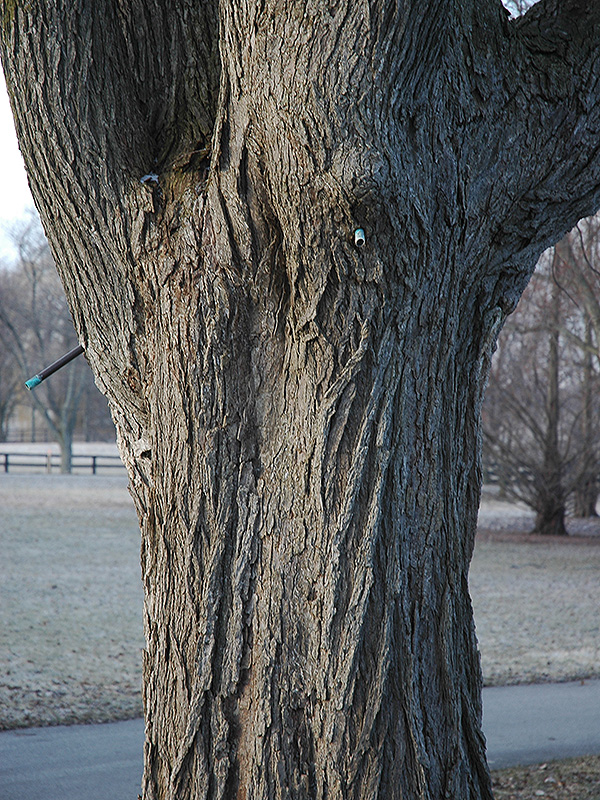

A 120 year old tree in A.M (Mac) Cuddy Garden in Strathroy, Ontario, Canada. This tree was removed in 2012 due to Dutch Elm disease.
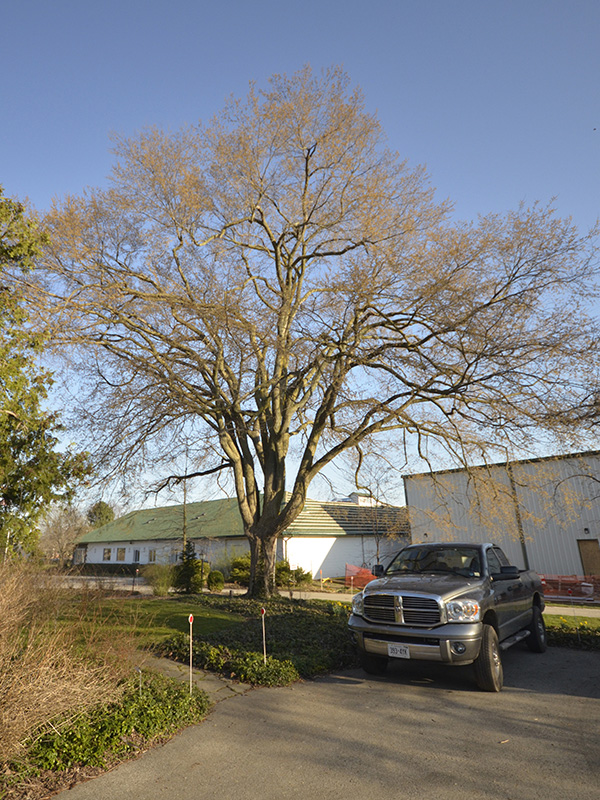
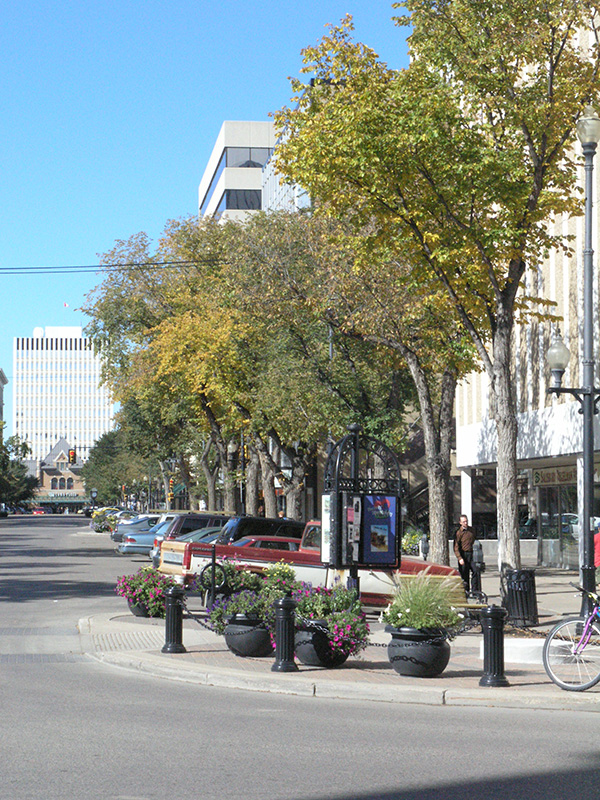
Planted as a street tree in Saskatoon, photographed in September.
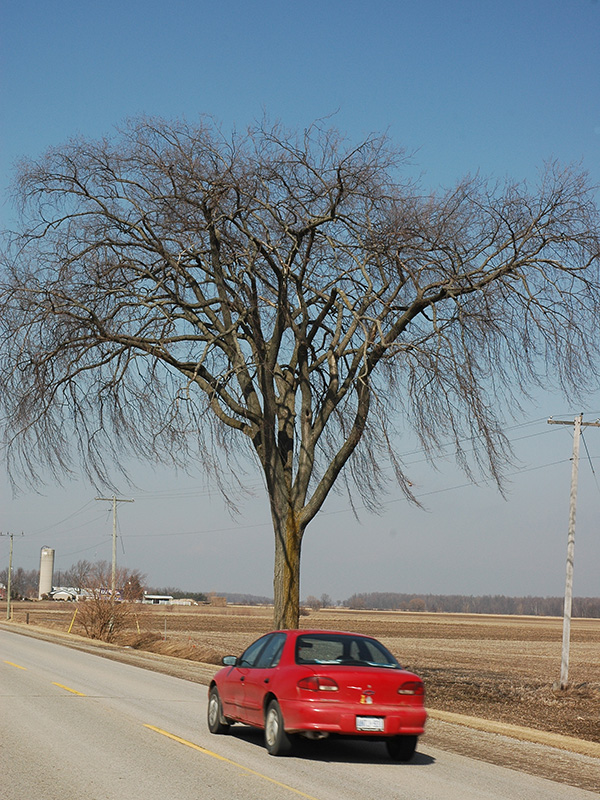
A tree alongside highway 23 near Bayfield, Ontario.
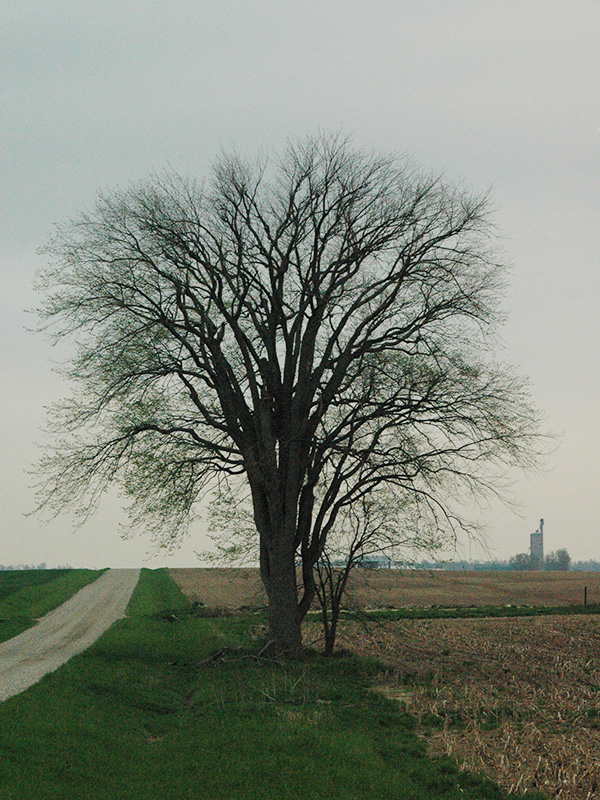
A mature tree in early spring in Adelaide Township, Ontario. This tree died in 2012 due to Dutch Elm disease.